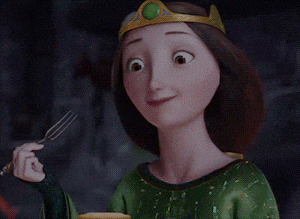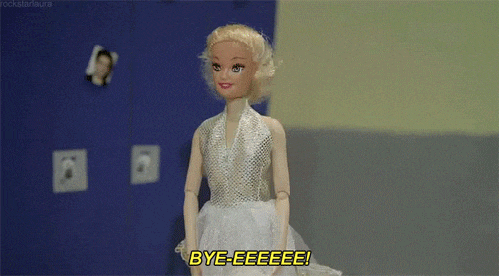What do you think?
Rate this book


386 pages, ebook
First published February 12, 2016


I wanted to like this book. It has so much of what makes urban fantasy great—a strong female protagonist; tightly written prose; creative use of profanity; and of course a plethora of angels, demons, werewolves, trolls and brownies, all of which serve to advance the plot in a milieu of supernatural activity.
And yet this book disappointed me a little. Don’t get me wrong: this wasn’t a bad read, and I have certainly seen worse. (As a writer I know what the slush pile looks like.) But nor was it the sum of its parts, so to speak—and despite all of its strengths, I simply could not ignore the glaring faults.
But before I go onto that, allow me to begin on a positive note.
Characterisation & Writing Style: The Good Bits
First off, let’s start with Caith—the protagonist and narrator. She is... quite a piece of work. Her mother is Satan’s sister; he fathers (yes, with a plural) are 1. the lord of the earth 2. a pixie king 3. a Crusader 4. a unicorn and 5. the head werewolf of North America.
That’s quite a list. In fact, I would even go as far as to say that Celia Kyle has gone overboard—Caith’s character resembles not so much an organic person as a smorgasbord of fantasy ideas strung together. At least sometimes.
That said, I like her. She’s strong, and bitchy, and has a great sense of (violent) humour. And of course she kicks ass. Her werewolf and demonic natures are clearly at the forefront—hellfire and claws are her preferred weapons of destruction—though her other natures occasionally chime in as well. A thelac demon she might disable with her unicorn powers, or Father Earth might lend her some mojo to deal with a nymph.
Several other characters are interesting as well. Jezebeth, her best friend, is a witch—and a fun witch at that. Her mother, Momma R, is like the witch from Hansel & Gretel—only a great deal more nuanced and entertaining at the same time.
And of course, there’s a romantic interest involved: Sam, Caith’s angelic lover. He’s very hot. (Aren’t they all?) He’s fierce, and loving, and I like him well enough.
Kyle’s characterisation is combined with a distinct writing style as well. Profanity, slang, and parataxis are used extensively. Although this does make the 600 year old main character resemble a teenager at times, it is largely successful in engaging the reader.
Characterisation & Writing Style: The Bad Bits
Despite all that I like about Kyle’s characters, there are also flaws that I simply cannot ignore.
First off, there’s Caith’s relationship with Sam. The sex is good—but that’s about it. They lack any serious emotional connection. For no other reason, I would say, than that we simply don’t know that much about Sam. What does he love; what does he hate? What motivates him? Why is he at odds with heaven? Heck, I don’t even know what he likes to do on a Friday night.
On top of that, there’s the fact that they don’t get all that much meaningful character interaction. With the exception of a rather weak scene at a karaoke bar, the duo are too busy killing vamps and zombies to actually talk with each other.
When important plot points come up—about Sam’s possible Fallen status and Caith’s mate relationship with him—they lack oomph, because I simply don’t care much about their relationship.
In fact, shallowness is a problem that pervades other aspects of the book. Some of the characters simply aren’t very convincing. Some of the scenes are just weak—for example, when .
As for the writing style, some of Kyle’s literary creations are just ridiculous instead of amusing. The writing style can also be exhausting; a case of too many one word sentences and single line paragraphs.
Plot: the Good and the Bad
One thing is for sure: Celia Kyle knows how to keep the reader’s interest. Hell’s Chapel is simply bursting with action. Caith regularly kicks ass—be it zombie, vamp, troll, or demon. Something is always in store to surprise you. Be it a sudden vampire attack, an unexpected zombie invasion, or a rowdy bar fight—anything can happen.
Of course there are problems. One simple problem is that there’s actually too much going on sometimes: you don’t have time to breathe, and neither do the characters. They’re too busy fighting each other to allow for more extensive character development or tension buildup.
Another problem is that the plot is sometimes used to conceal vacuity. (And trust me: that’s always a bad sign.) Why, for example, is Sam’s relationship with On High—to employ the lexicon—so troubled? Kyle gives us some explanation, but it doesn’t feel adequate or convincing.
And then there’s the sex. Caith is constantly thinking about it—be it with Sam, her exes, or anyone who tickles her ahem fancy. But with so many descriptions of hard cocks, wet pussies and fucking—well, let’s just say that it’s a bit overdone. It doesn’t exactly inspire deep character building.
Conclusion
As I say: Hell’s Chapel is a bit disappointing. It often reads like a formula book instead of an original work. And on some level it is a formula book—obviously—and there’s nothing wrong with that, per se. Formula writing can be great, if done right.
The trouble is, Celia Kyle doesn’t always do it right.
That said, it is still a tremendously entertaining book. I am reading the sequel. Whether or not you will find it worth your time is up to you, of course; but personally I did enjoy the book, despite its substantial flaws.
Rating: 3.5/5